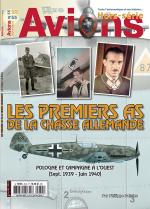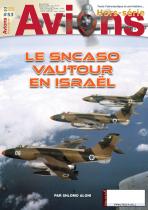If the Luftwaffe had almost as many planes as crews in September 1939, in 1943 the efforts made by the German factories under the leadership of Fritz Todt then Albert Speer allowed the German military aviation to have more than 'devices only by personnel able to operate them. It therefore seemed logical to lend or cede these redundant aircraft to the Finnish, Hungarian or Romanian allies fighting in the east. Ju 87s (often 'second hand') were thus handed over to crews of the Romanian Royal Air Force who, until then had only flown on obsolete ground support planes like the PZL 24. In mid -43, Grupul 3 Picaj was set up and then engaged very quickly in Crimea. If the Romanian aviators were known to be whimsical (like their Latin cousins of the Regia Aeronautica), they were nonetheless very good and Grupul 3, whose members multiplied precision bombing missions, would ultimately to be the only competent ground support unit in the Kuban sector. The many messages of congratulations and thanks from the ground troops as well as local commands confirmed its value. According to Max Axworthy: "Grupul 3's stay at Kerch was the best performance of the Romanian bomber war and appears to have been the best bombing support for Axis airplanes from which the Germans benefited throughout this war."
Following the advance of the Red Army, the Romanian Stukisti fought from their national territory before having to suddenly change sides after the astonishing about-face of their government of August 23, 1944. The end of the war will see the Grupul 3 reformed and 'rearranged' to fight its old allies.
Despite an eventful and very abrupt end, Grupul 3 will go down in Romanian aviation history as its first "modern" dive bombing unit.
We talk about it in the press and on the Internet:
- What is hidden behind this strange name is most interesting. I knew the JU 87 of the Luftwaffe and the Regia Aeronitca but this Roman bird not at all. Very interesting booklet to have in its library. © Claude Balmefrezol - maquetland.com
- The 3rd Reich wanted to be for a thousand years and only constituted by a pure Aryan race which would have used the other unworthy races as slaves, a project which was partly almost realized but which very quickly encountered the lack of lords capable of ensuring continuity and follow-up. warriors from where and against heart the use of troop or group made up of auxiliary allies more or less submissive and more or less combative or even worse auxiliaries capable of turning against the ordering party depending on the circumstances ...
This was partly the case with the Italians and locally with legions of more or less zealous volunteers including the Romanian troops, a competent and combative troop but little politically motivated, these troops as the air force were armed and equipped by the Reich , Group 3 of the Romanian Air Force was part of it between 1943 and 1944, when the honeymoon ended with the manu militari recovery of the still existing material and the internment for many of the surviving combatants. Here is therefore told on the basis of unpublished documents for the most part and on the basis of the work of the late Cristian Craciunoiu and continued by the talented Jean-Louis Roba who took over from the first, something far from easy but who, here is be a success, which for such a specialized and unknown subject is worth the hours and days of work ... consisting of photos, profile, anecdotes and other details will be a mine of information for enthusiasts of this time when knowing how to navigate in troubled waters was an essential element to survival ... © Marc Deber - Rivers & Canals.© Marc Deber - Fleuves & Canaux.








